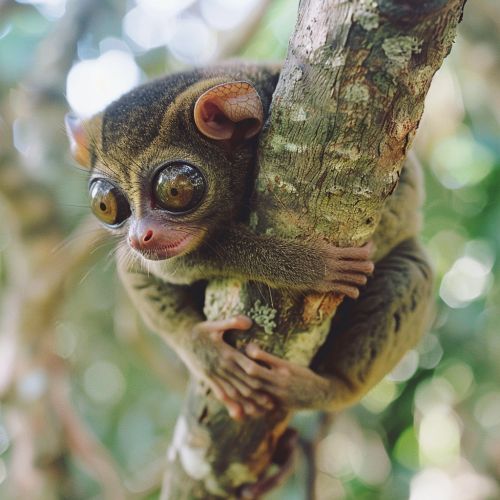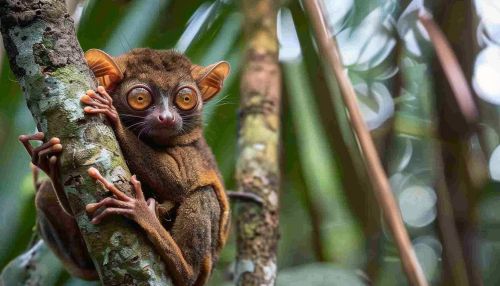Tarsiiformes
Taxonomy and Evolution
Tarsiiformes is an order of mammals that includes the family Tarsiidae, commonly known as tarsiers. The order is part of the larger group of primates, which also includes humans, apes, and monkeys. Tarsiiformes is believed to have evolved around 55-60 million years ago, during the Eocene epoch. The order's name derives from the elongated tarsal bones found in the feet of these animals, which are a distinctive characteristic of the order.


Anatomy and Physiology
Tarsiiformes are small primates, typically weighing between 80-160 grams and measuring 10-15 centimeters in body length. They have a distinctive appearance, with large, round eyes that are fixed in the skull, long fingers and toes, and an elongated tarsus bone in the foot. These adaptations are believed to be a result of their arboreal lifestyle and nocturnal habits.
The large eyes of Tarsiiformes are among the largest, relative to body size, of any mammal. These eyes allow them to see clearly in low light conditions, an adaptation to their nocturnal lifestyle. The eyes are fixed in the skull, meaning that Tarsiiformes must turn their head to look in different directions. They are capable of rotating their head almost 180 degrees in either direction, a feature that is unique among primates.
The elongated tarsus bone in the foot is another distinctive feature of Tarsiiformes. This adaptation allows them to leap between tree branches with great precision and agility. The long fingers and toes, equipped with pads for gripping, further aid in their arboreal lifestyle.
Behavior and Ecology
Tarsiiformes are arboreal and nocturnal, spending their days sleeping in dense vegetation and their nights hunting for food. They are primarily insectivorous, feeding on a diet of insects and other small invertebrates. Some species also consume small vertebrates, such as birds and bats.
Tarsiiformes are solitary animals, with males and females coming together only to mate. After a gestation period of approximately six months, the female gives birth to a single offspring. The young tarsier is relatively well developed at birth, with fur and open eyes, and is able to cling to its mother's fur immediately.
Conservation
Many species of Tarsiiformes are threatened by habitat loss due to deforestation and human encroachment. The International Union for Conservation of Nature (IUCN) lists several species as vulnerable or endangered. Conservation efforts for Tarsiiformes focus on habitat preservation and the establishment of protected areas.
